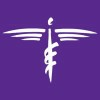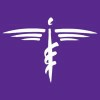Terri Henkels, director of the Polk County Health Department, released this information Sept. 8:
Everyone is hungry for concrete answers regarding the H1N1 influenza A pandemic and what the Polk County response will be. H1N1 has been and continues to be in our community. Few people appear to be getting sick. We anticipate the spread to continue through the fall and winter at a greater rate although we have no way of knowing what the real rate of the spread will be.
What we do know is the many healthy adults who have become ill with H1N1 have not gotten as sick as we feared they might (but that might change this fall). We also know the populations at highest risk for more severe illness and complications are
- pregnant women
- newborn infants under 6 months of age – because they can’t receive the vaccine (their parents and caregivers will need protection.)
- infants, children and young adults ages 6 months to 24 years of age
- health care workers and emergency service personnel – because they have the a high risk for exposure
- people 24 – 64 years of age with underlying health conditions.
Adults 65 years of age and older have had minimal impact from this virus. The H1N1 vaccine should be available (in limited supplies) in mid- to late October.
We also know all of us have a role to play in keeping our community and each other safe. Each of us can effectively reduce the spread of the illness by staying home when we are sick with flu-like symptoms and use good hygiene etiquette (cough and sneeze in a tissue or your sleeve and frequently wash your hands). We also know that antiviral taken in the first 48 hours of symptoms could help minimize the severity and length of illness. We also know that seasonal flu will also be spreading during fall and winter months and that seasonal flu and pneumonia vaccinations are readily available in our community.
The questions yet to be answered are: How many doses of H1N1 vaccine are required? If 2 doses are required, how far apart can we give them? How long does it take to after receiving a shot to have immunity? How much vaccine are we going to receive in Polk County and at what is the timeframe for receipt?
Just like you, we do not have all the information we need to fully develop our plans.
What we are doing is preparing with school districts, colleges, hospitals, emergency service personnel, private businesses and hundreds of other partners in the community. We are planning a menu of multiple strategies for vaccine distribution on which to draw from once we have stable information and when we know how much and when vaccine will be received. We have 48 staff members who are all working very diligently and intensely in developing plans for each of these concept strategies.
The vaccine distribution strategies in Polk County will be a blended program for the at-risk populations and they will be built upon the premise that targeted people should receive the vaccine as quickly as it becomes available. The possible venues being planned are mass clinics, school-based clinics, school and community rounds (nurses provide on-site vaccinations at licensed child care facilities, pre-schools, and other places), and pushing vaccine out through select health care providers who work with the target populations and can provide the vaccine directly to these people.
In the coming weeks you can expect us to provide you ongoing education and information, including our finalized plans, through a variety of sources including the media, blogs, Twitter, our partners and on our website www.polkcountyiowa.gov/health. We want to keep you safe and informed with the latest information.
You can also sign up through our website to receive health alerts when we post new information to our website and you can submit questions and comments through our website e-mail. We also have a special phone line (515-323-5330) set up during the work week from 9 a.m. to 4 p.m. to streamline our response to H1N1 questions.
We invite you to be our partner in this response by observing the important health messages on staying home when you are sick, using good hygiene etiquette, getting vaccinated for seasonal flu and encouraging people you know that are in a high risk group to get vaccinated for H1N1 when they become available.

